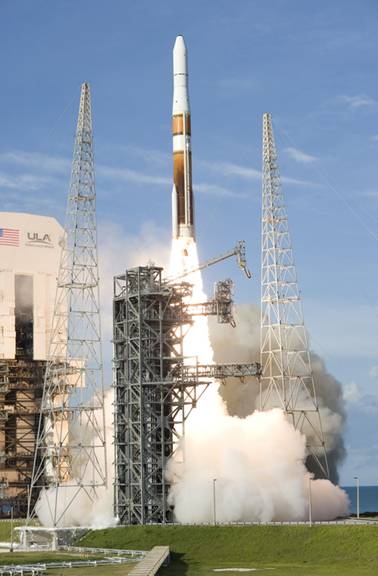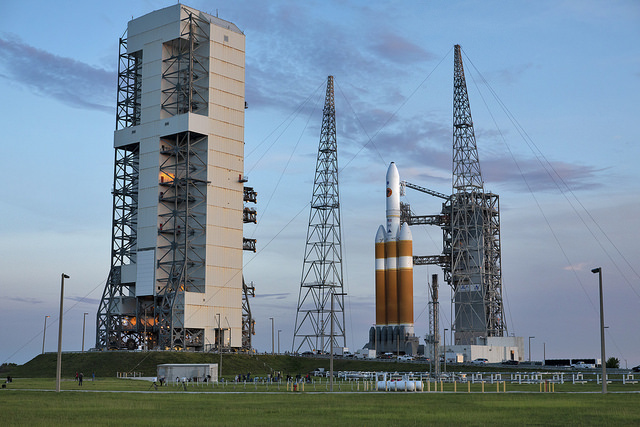DELTA IV FACT SHEET
By Cliff Lethbridge

Delta IV Launch, Photo Courtesy NASA
Classification: Space Launch Vehicle
Length: 235 feet
Diameter: 16.4 feet
Date of First Cape Canaveral Launch: November 20, 2002
Date of Final Cape Canaveral Launch: Active
Number of Cape Canaveral Launches: Active
Designed as a part of the Air Force Evolved Expendable Launch Vehicle (EELV) program, Delta IV is the latest evolution of the long-lived Delta rocket family. The rocket was introduced by Boeing, but is currently operated by United Launch Alliance, a joint venture of Boeing and Lockheed-Martin. Delta IV is a two-stage launch vehicle. The Delta IV first stage, known as a Common Booster Core, employs a single RS-68 engine, which burns a combination of liquid hydrogen and liquid oxygen. The Common Booster Core can produce a liftoff thrust of 744,737 pounds. In the Delta IV Heavy configuration, three Common Booster Cores are strapped together to increase liftoff thrust approximately three times that of the single Core version. First stage thrust can be augmented by up to four Graphite Epoxy Motor (GEM) strap-on solid rocket boosters. Each booster can produce a thrust of 185,817 pounds. The Delta IV second stage is powered by a single RL-10B2 engine which burns liquid hydrogen and liquid oxygen and can produce a thrust of 24,740 pounds. The Delta IV is available in a number of configurations, depending upon fairing size, number of Common Booster Cores and number of solid rocket boosters. Taking into account all of the possible variants, the Delta IV is capable of carrying a 18,900-pound to 56,800-pound payload to Low-Earth Orbit or a 8,500-pound to 23,904-pound payload to Geosynchronous Transfer Orbit.

Delta IV Heavy On Launch Pad, Photo Courtesy NASA


